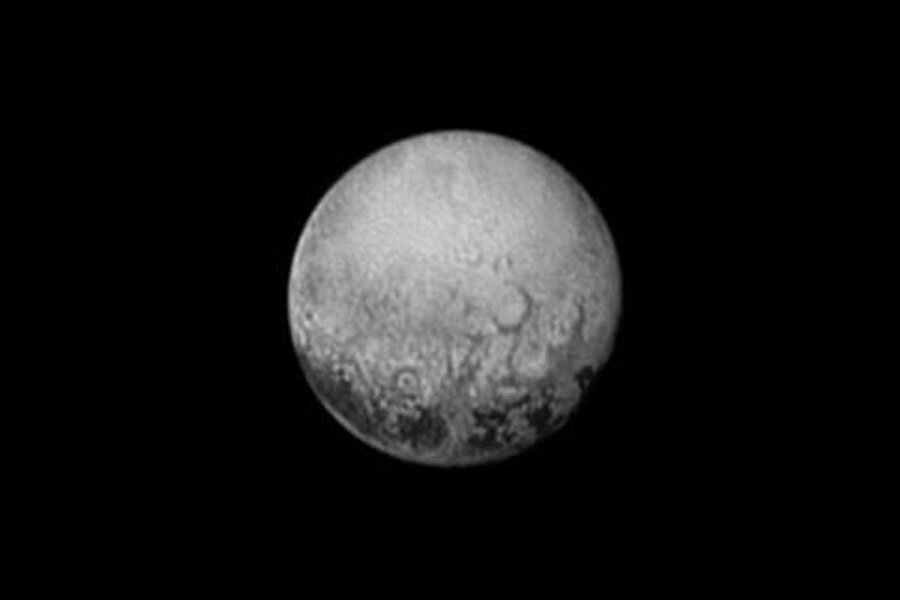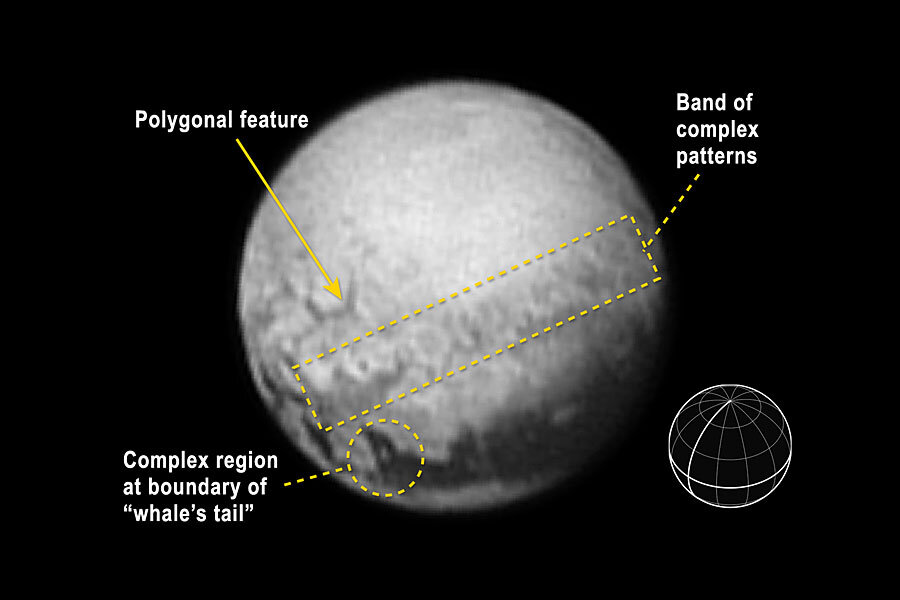NASA probe reveals strange, evenly spaced features on Pluto
Sen—Sharper images revealing more detail about Pluto are being released daily as the New Horizons spacecraft fast approaches its closest point to the dwarf planet system.
The probe, which is traveling at nearly 50,000 km per hour, will close to within 12,500 km (7,800 miles) of the surface on Tuesday July 14 at 11.49 UTC.
The images being returned daily by the probe are now sufficiently detailed to show geological features on the surface.
The main image above shows the far side of Pluto that always faces Charon, and shows linear marks above the equatorial region which appear to have polygonal qualities, almost honeycomb like. “It’s weird that they’re spaced so regularly,” New Horizons program scientist Curt Niebur said in a statement.
Color and composition data acquired by the spacecraft will eventually be combined with the images to help geologists analyse the surface features.
When New Horizons passes closest on July 14, it will actually be seeing the other side of Pluto—the side with the heart shape on it as revealed in images a few days ago. Alan Stern, the Principal Investigator for New Horizons, described the observations being made now of the Charon-facing side of Pluto as “the last, best look that anyone will have of Pluto’s far side for decades to come.”
Pluto was discovered in 1930 by Clyde Tombaugh. The largest of its five known moons, Charon, was discovered in 1978. New Horizons is giving us the best views ever, replacing the previously best fuzzy globe imaged by the Hubble Space Telescope.
New Horizons launched atop an Atlas V rocket from Cape Canaveral Air Force Station, Florida, on Jan. 19, 2006 to begin its nine and a half year journey to the Kuiper Belt. At the time of its launch, Pluto was still classified as the ninth planet in the Solar System. This changed however after the International Astronomical Union (IAU) defined a planet for the first time in 2006. Though Pluto orbits the Sun and has sufficient mass to have formed into a round globe, it had insufficient gravitational muscle to clear its neighborhood. As a result, it failed to meet one of the three newly determined criteria for a planet, and was instead classified as a new type of object—a dwarf planet.
New Horizons is the first spacecraft to fly past Pluto. After Pluto the mission team hope to be able to visit another Kuiper Belt Object, and several potential targets have been identified from observations made using the Hubble Space Telescope.
The Johns Hopkins University Applied Physics Laboratory (APL) in Maryland operates the New Horizons spacecraft for NASA. Principal Investigator Stern is based at the Southwest Research Institute in Boulder, Colorado.
Related Links:
Blog: Pluto fascinates, whatever we call it
Blog: Watch Pluto Grow In New Horizons’ Eye
Original story from Sen. © 2015 Sen TV Limited. All rights reserved. This material may not be published, broadcast, rewritten or redistributed. For more space news visit Sen.com and follow @sen on Twitter.








